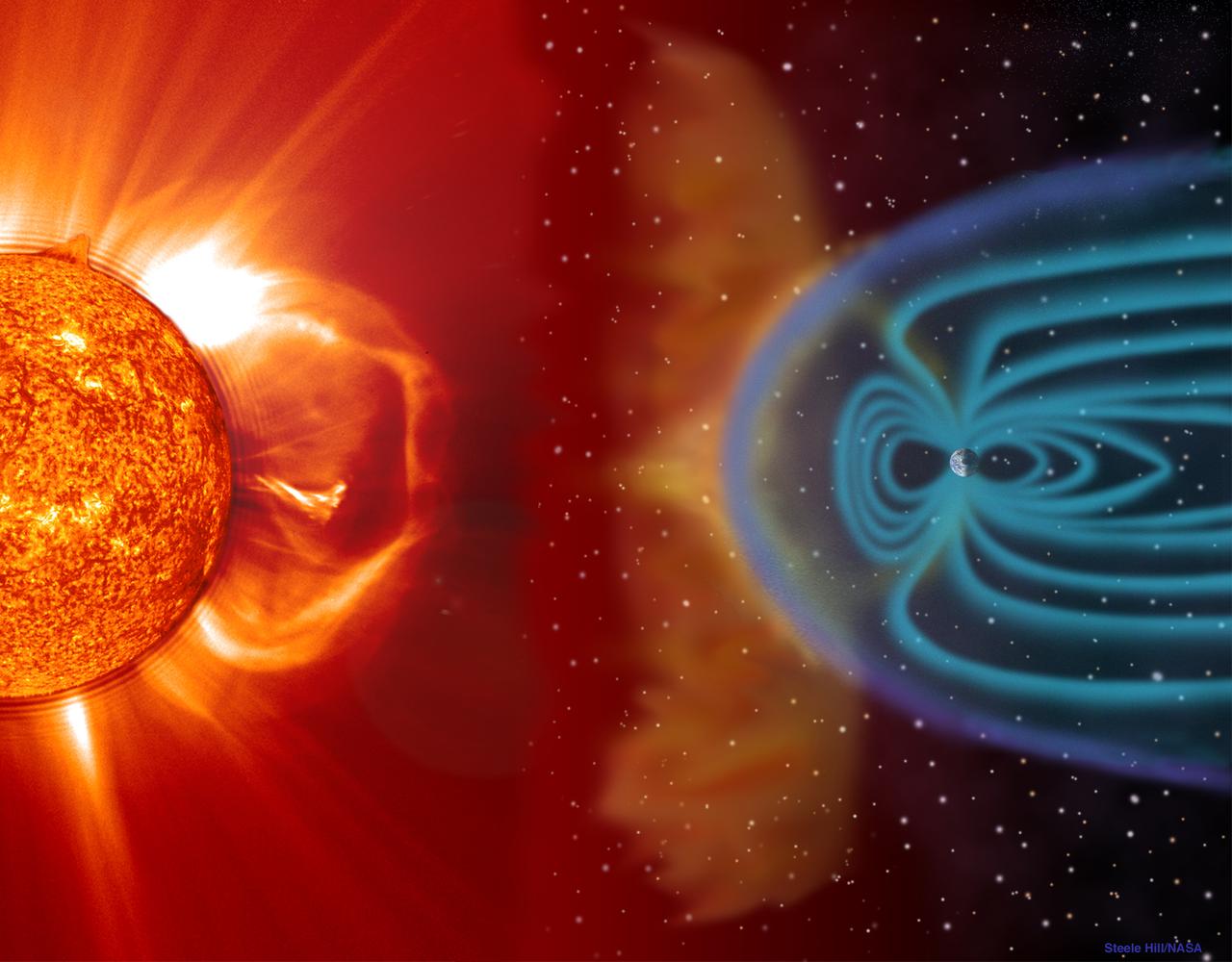Earth's Magnetic Field is A Ruthless, Solar-Wind-Shredding Machine

As Earth cruises through the black sea of space at about 67,000 mph (108,000 km/h), the planet's magnetic field pushes aside solar wind — the constant stream of plasma particles ejected by the sun — the same way the bow of a speeding motorboat pushes aside water. Scientists call this phenomenon "bow shock" because of its similarity to a ship surging through stubborn waves.
Researchers have long suspected that we can thank this bow shock for reducing the scorching solar wind into the mild breezes we feel on Earth, but they didn't know exactly how this happened. Now, a new paper published May 31 in the journal Physical Review Letters adds a few billion electron-size pieces to the puzzle. [Rainbow Album: The Many Colors of the Sun]
In a study led by researchers at the University of Maryland and NASA's Goddard Space Flight Center in Maryland, scientists delved into data obtained by four NASA satellites that have been studying the collision zone between the solar wind and Earth's magnetic shield since 2015. They found that, when the solar wind smashes against Earth's bow shock, solar electrons accelerate so rapidly that they literally break apart, converting potentially destructive energy into innocuous heat.
"As the solar wind crashes into Earth's magnetic field, the bow shock protects us by slowing down this wind and changing it to a nice, warm breeze," lead study author Li-Jen Chen, an astronomer at the University of Maryland, said in a statement. "We now have a better idea how this happens."
Sailing the cosmic seas
Earth is constantly being bombarded by a hot, soupy plasma of protons, electrons and ions loosed by the sun in the form of solar wind. These winds blow all day and in all directions, blasting out of our nearest star at speeds of up to 500 miles per second (800 kilometers per second) and temperatures of up to 2.9 million degrees Fahrenheit (1.6 million degrees Celsius), according to NASA. You'd think that would be more than enough to bake our planet into a giant, orbiting lump of ash, but Earth and its atmosphere remain largely unscathed thanks to the planet's strong magnetic field.
Chen and her colleagues knew they could find an explanation for this planetary deflection maneuver by studying Earth's bow shock. They suspected from the outset that electrons were to blame: Somehow, the researchers wrote, solar electrons were trading energy for heat when they bashed into the bow shock at supersonic speeds. But how?
The team looked for answers in data captured by NASA's Magnetospheric Multiscale (MMS) mission, which launched four identical satellites in 2015 to study the interactions between Earth's magnetic field and the solar wind where they meet at the planet's bow shock.
Sign up for the Live Science daily newsletter now
Get the world’s most fascinating discoveries delivered straight to your inbox.

Instruments aboard these satellites can record detailed measurements of individual particles near Earth's bow shock every 30 milliseconds, the researchers wrote. This processing speed proved crucial during a freak solar storm that swept past the planet on one of the mission's early days. When sudden solar gusts shoved Earth's bow shock closer to the planet's surface, NASA's satellites got an intimate look at the sun's plasma stream before, during and after it collided with the bow shock.
Once the stream hit the bow shock, the solar electrons within it accelerated — a lot. Within just 90 milliseconds, the electrons accelerated so quickly that they destabilized and broke into bits. This breakdown robbed the electrons of their energy, the researchers said, and turned that energy into heat.
"The extremely fast measurements from MMS allowed us finally to see the electron heating process in the thin shock layer," study co-author Thomas Moore, a senior project scientist at NASA's Goddard Space Flight Center, said in a statement. "This is groundbreaking because now we have the ability to identify the mechanism at work, instead of just observing its consequences."
Understanding exactly how Earth's bow shock protects the planet from unmitigated solar radiation could eventually help scientists find new ways to protect satellites, spacecraft and perhaps even future settlements on other planets, the researchers said. But for now, enjoy the gentle winds of summer — and know, somewhere out there, that Earth's magnetic field is violently ripping billions of solar electrons to bits on your behalf.
Originally published on Live Science.

Brandon is the space/physics editor at Live Science. His writing has appeared in The Washington Post, Reader's Digest, CBS.com, the Richard Dawkins Foundation website and other outlets. He holds a bachelor's degree in creative writing from the University of Arizona, with minors in journalism and media arts. He enjoys writing most about space, geoscience and the mysteries of the universe.










